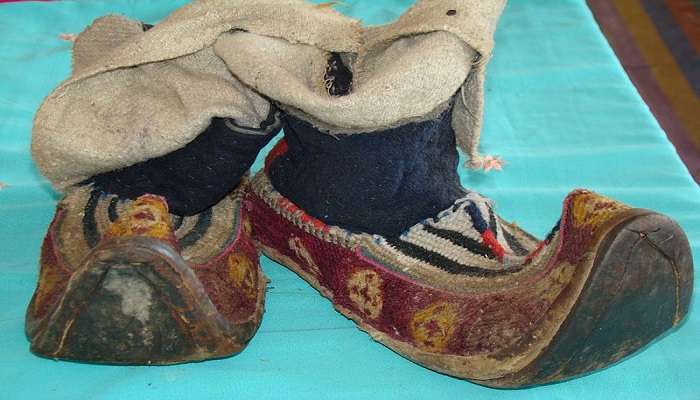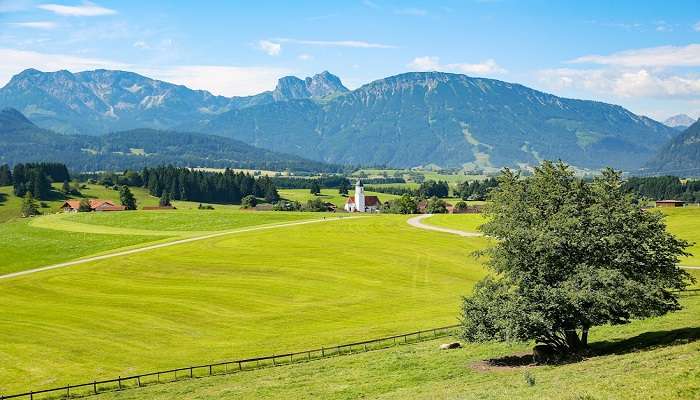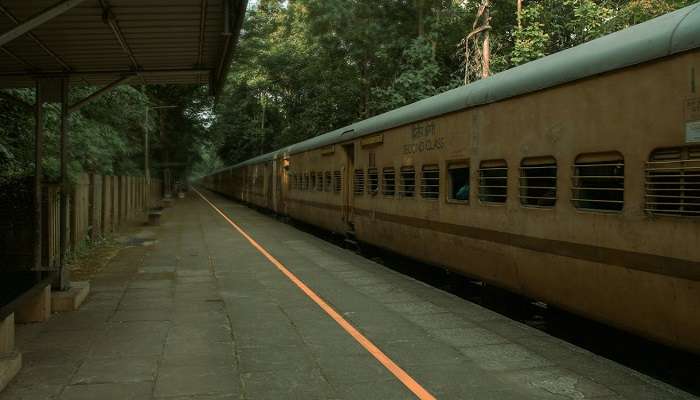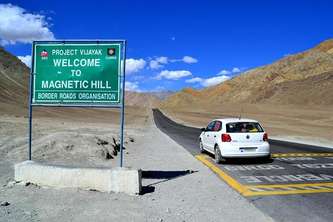Unveil The Silk Route Legacy At Munshi Aziz Bhat Museum Of Central Asia

The Munshi Aziz Bhat Museum is located in Kargil, making it a treasure trove of artefacts related to Central Asian trade via the medium of the Silk Route. Situated in the centre of Kargil, in Ladakh, the Munshi Aziz Bhat Museum of Central Asian and Kargil Trade Artefacts is an institution steeped in trading history. The visitor is whirled through an absorbing journey back in time to come face-to-face with vibrant cultural exchanges that one day thrived on the Silk Route. The direct descendants of Munshi Aziz Bhat, a great trader and historian, founded it. The museum has a wide range of exhibits that bring out the excitement and commerce of life in Central Asia during the late nineteenth and early twentieth centuries with vividness—from intricate textiles and rare manuscripts to vintage photographs and trade ledgers, every exhibit speaks of cultural confluence and economic dynamism that shaped the identity of the region.
History Of Munshi Aziz Bhat Museum

The Museum goes back to the early 1920s when a farsighted trader and erudite, Munshi Aziz Bhat of Kargil, established a caravanserai. This inn became one of the essential stopovers for merchants crossing through the ancient Silk Route that connected the Indian subcontinent with Central Asia. It was through his bookkeeper nature and hobby of collecting items that Munshi Aziz Bhat laid the foundation of what is now a treasure trove of historical articles.
It was in 2004 that two grandsons of Bhat, Mohammad Sadiq Hardassi and Gulzar Hussain Munshi, opened up the family collection to the public. It was a nobility that stirred their soul: the urge to save the rich cultural heritage of the region from the jaws of time. Their hard work paid off in 2005 with the opening of the museum—a place uniquely positioned to give a window to the fascinating world of Central Asian trade and Kargil’s important positioning in this historical network of cities and towns across the Old World.
Also Read: Things To Do In Ladakh
Architectural Marvel Of Munshi Aziz Bhat Museum

Munshi Aziz Bhat Museum is housed in a refurbished caravanserai, a kind of wayside inn that once covered the Silk Route. The building itself has been a witness to the type of architecture that prevailed here during the early 20th century. Its stone walls, thick and stolid for the harsh Ladakhi climate, usher in a natural climate control system to help preserve delicate artefacts. Much of the caravanserai structure was retained in the design of the museum, focusing on a courtyard ringed with rooms now used for exhibition spaces.
Indeed, this restoration effort did much to balance conserved aspects of the building with adaptations for this new use. Former stables are now repurposed to house more extensive exhibits, and sleeping quarters show more minor artefacts are still visible. This blend of historic architecture with modern museology makes this experience unique and rich at the attractions.
Nearby Attractions To Munshi Aziz Bhat Museum
Look at some of the breathtaking attractions near this museum for a lifetime experience.
1. Kargil War Memorial

A Kargil War Memorial has been built in memorial to the occasion when soldiers lost their lives in fighting against all odds. This memorial, located in Drass—often called the second coldest inhabited place in the world—brings back grim memories of recent history. Within the premises, there is a Manoj Pandey Gallery, photo exhibits, and weapons used during the time of war. Here, there is a pink sandstone wall containing the name of every soldier who lost their life during the war. Added to this is a museum and eternal flame here. With a beautiful backdrop of Tololing Hill, the memorial indeed presents a poignant experience of history intertwined with nature.
Location: Drass, Kargil District, Ladakh
Entry Fees: Free
Timing: Open 24 hours
Distance from city centre: 60 km
Related Post: Tourist Circuits Of Ladakh
2. Mulbekh Monastery

Mulbekh Monastery is a dual Gompa of the Drukpa and Gelugpa Buddhist orders, situated rather dramatically on a rocky hill overlooking the village of Mulbekh. It houses a gigantic 9-metre high rock-carved statue of Maitreya, the future Buddha, dating back to the 8th century. This imposing sculpture, visible from the highway itself, has acquired the nickname of “Chamba.” In the monastery itself, one comes across ancient artefacts, murals intricately done, and a number of valuable manuscripts. It offers visitors prayer halls, interactions with monks, and a panoramic view of the surrounding Zanskar range.
Location: Mulbekh, Kargil District, Ladakh
Entry Fees: Free (donations appreciated)
Timing: 6:00 AM to 6:00 PM daily
Distance from city centre: 45 km
3. Suru Valley

The Suru River Valley is an oasis amidst all that ruggedness of Ladakh. This vale is highly famous for its landscapes that form the backdrop of the mighty peaks Kun and Nun, towering over 7,000 metres. On the floor of the valley, one comes across many villages with tiny houses, apricot orchards, and fields of barley, which are very sharp in contrast to these snow-capped mountains. One can trek and take pictures of those beautiful places to make it an exotic cultural experience in the local Balti villages. This land is famous for its wide range of flora and fauna, including some rare species like the snow leopard and the Tibetan wolf. Suru Valley offers just that blend of natural beauty and cultural richness that will attract any nature enthusiast or adventurer.
Location: Kargil District, Ladakh
Entry Fees: Free
Timing: Best visited during summer months (June to September)
Distance from city centre: 30 km (to the start of the valley)
Related Post: Fotu La
4. Rangdum Monastery

At an altitude of 4,031 metres and enveloped with the lonely vistas of the Suru Valley, Rangdum Monastery is an outpost of Tibetan Buddhism in isolation. This Gelugpa monastery, founded in the 18th century, dramatically rises out of the desolation of the landscape, with the Nun-Kun massif making for an imposing backdrop. Every monastery complex includes a main temple, monks’ quarters, and often a small museum that houses ancient artefacts and Buddhist paintings—thangkas. Here, one can witness prayer ceremonies, walk beside the intricate murals of Buddhist deities, and take in lifelong views of mountains and glaciers.
Location: Rangdum, Suru Valley, Kargil District, Ladakh
Entry Fees: NA
Timings: 6:00 AM to 6:00 PM, daily
Distance from city centre: 130 km
5. Hunderman Village

Hunderman, better known as the “Ghost Village,” is a unique attraction that gives meaning to the enigmatic geopolitical history of the area. It was once a flourishing village that was deserted during the Indo-Pakistani War in 1971 when literally the borders were redefined. Today, it lies there like an open-air museum where one can enter house after house and imagine the lives that have been deserted. Partly, it has been turned into a “Museum of Memories” with the articles the old residents leave behind. Hunderman also provides a view into areas across the border now under Pakistani control.
Location: Hunderman, Kargil District, Ladakh
Entry Fees: Free
Timing: Daylight hours recommended
Distance from City Center: 10 km
Related Post: Ladakh In Winter
How To Reach Munshi Aziz Bhat Museum

Image Source: Pexels
By Air
Munshi Aziz Bhat Museum is easily accessible by road from Leh, approximately 215 km away, through Kushok Bakula Rimpochee Airport (IXL) Leh. One can hire a taxi or a cab to get to Kargil on reaching the airport. Depending on the road conditions and weather, it may take quite some time, about 5-6 hours if coming from Lhasa.
By Train
At present, there is no railway track connecting Kargil, but the work of providing the new railway track to Quaid-e-Azam, Jailri, and Kargil is ongoing. The nearest major railway stations are: Some of the close railway stations are:
Jammu Tawi Railway Station: Located at the disadvantageous distance of about 440 Kms from Kargil. From Kargil to Zozo, one has options available, like taxis, buses, and shared cabs from Jammu.
By Bus
Kargil is accessible by road, and you can reach the museum by bus. The city of Kargil is connected through road transport; to visit the museum, one can take a bus.
Interstate Buses: There are buses available from Jammu, Srinagar, and Leh to Kargil. These buses may take longer to get to the intended destination due to the mountain ranges and general network of the roads.
Local Buses: Upon reaching Kargil, there are local transport mediums and taxis to get to the museum.
By Taxi/Cab
Taxis and Cabs are available in some places like Leh, Srinagar, Jammu, etc., and people can take a taxi/cab to reach Kargil directly. When coming to Leh or Srinagar, one could take a private taxi, which is comparatively better and better equipped.
You May Also Like To Read: Hall Of Fame
The Munshi Aziz Bhat Museum is a singular cultural icon. It serves as the unique gaze into the rich tapestry of Central Asian trade, with Kargil playing a central role in this historic network. More than helping to preserve a critical chapter in regional history, its keenly chosen collection celebrates that spirit of intercultural exchange that really defined the Silk Route era. The Munshi Aziz Bhat Museum has remained an essential guardian of Kargil’s legacy against the backdrop of rapid change. So Trip to Kargil It has stood there in unison so that stories on the Silk Route may evoke and inspire young minds during times to come.
For our editorial codes of conduct and copyright disclaimer, please click here.
Cover Image Credit :Meenal Bhalla for Wikimedia commons
Frequently Asked Questions About Munshi Aziz Bhat Museum
What are the opening timings of the Munshi Aziz Bhat Museum?
The museum is open from 10:00 AM to 5:00 PM daily. However, it is always a good idea to call ahead as the times may vary seasonally.
Do I need to pay for my visit?
Yes. A very nominal fee is charged for entry. It might vary, so it is best to contact the museum for the exact amount and the latest information.
How much time should I plan on spending at the museum?
It would take an average of 1-2 hours to visit the museum, again based upon the one's interest in the displays.
Are there any guided tours within the museum?
Guided tours are usually provided. Inquiries about availing of a tour guide are best had at the entrance, while for groups, a call ahead to the museum would be more appropriate.
What time of the year is the best time to visit Kargil and the museum?
It is best to go from June to September since the weather will be more tolerable and will ensure easy access to roads. Although it is open throughout the year, visits in winter can be quite a problem due to inclement weather.
People Also Read:
Museums In Frankfurt Naval Aviation Museum Spiritual Museum

Unveil the hidden treasures of the globe and turn every travel dream into reality. As a Content Writer, I am passionate enough to craft stories from ancient wonders to modern marvels. My words paint the picture-perfect itinerary for unforgettable experiences. Let my words be your trusted guide to immerse in the diverse culture and discover the beauty of the unknown.











